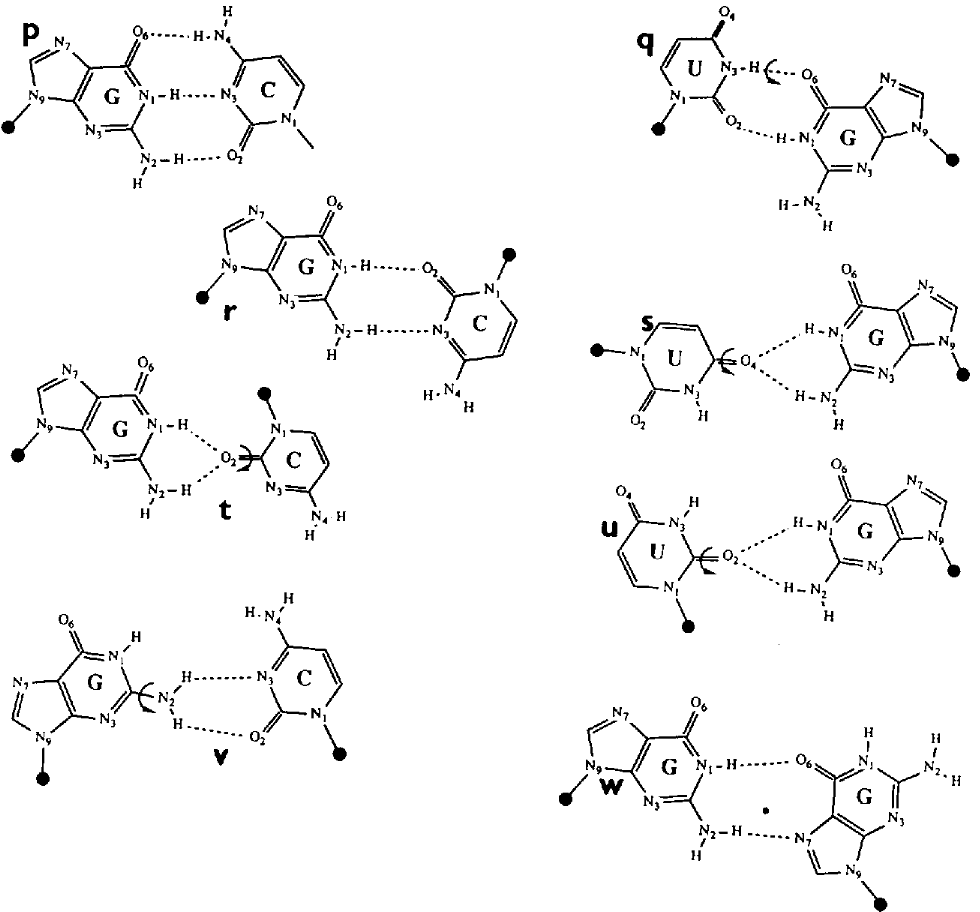

The Base Pair Directory
G. Dirheimer, G. Keith, P. Dumas, E. Westhof; In: tRNA: Structure, Biosynthesis, and Function (D. Söll, U. RajBhandary, Eds.) American Society for Microbiology, Washington, 1995, pp. 111-112.
Representation of all possible interactions between bases involving at least two H bonds. Some of the non-Watson-Crick interactions (b, c, g, k, l, m, q, and r) were mentioned by Donohue as early as 1956. Interactions involving N3 of purines are not considered. A curved arrow on a covalent bond means that a symmetric configuration obtained by a 180 deg rotation around thi sbond must be considered. This simplification has not been used in the particular cases of Watson-Crick (a and b) and Hoogsteen (e and f) pairing between A and U. It should be kept in mind that this figure is only schematic and is not intended to be exact regarding the angles of H bonds. Also, some of the interactions (e.g., s and t) are illustrated for completeness and may not ever be observed in real structures.
Part 3(p - w)
